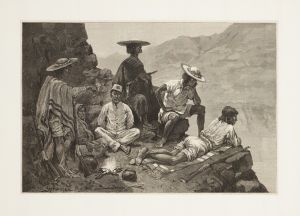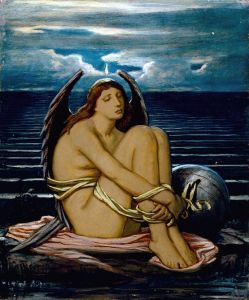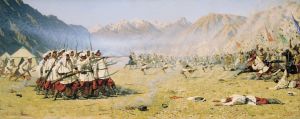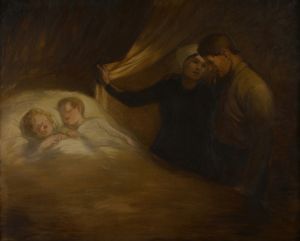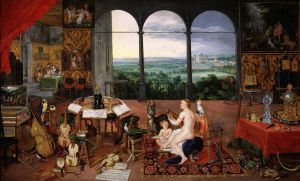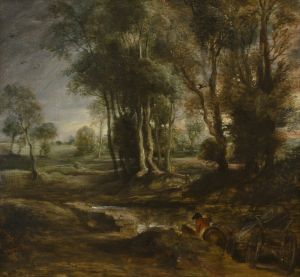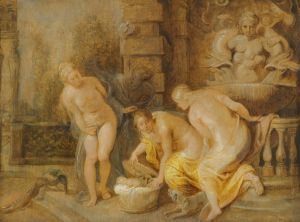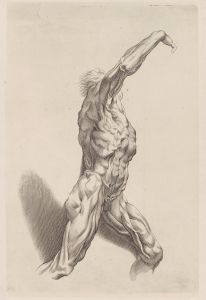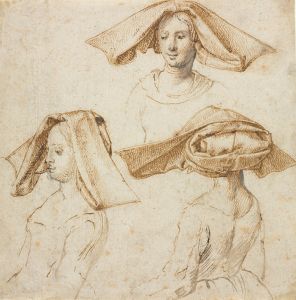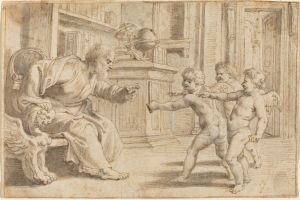
Two figures straining against a post
A hand-painted replica of Peter Paul Rubens’s masterpiece Two figures straining against a post, meticulously crafted by professional artists to capture the true essence of the original. Each piece is created with museum-quality canvas and rare mineral pigments, carefully painted by experienced artists with delicate brushstrokes and rich, layered colors to perfectly recreate the texture of the original artwork. Unlike machine-printed reproductions, this hand-painted version brings the painting to life, infused with the artist’s emotions and skill in every stroke. Whether for personal collection or home decoration, it instantly elevates the artistic atmosphere of any space.
"Two Figures Straining Against a Post" is a painting by the renowned Flemish Baroque artist Peter Paul Rubens. Rubens, born in 1577 in Siegen, was a prolific painter known for his vibrant compositions, dynamic figures, and masterful use of color and movement. He was a leading figure in the Baroque movement, which emphasized drama, emotion, and grandeur.
The painting "Two Figures Straining Against a Post" exemplifies Rubens' ability to capture human anatomy and movement with remarkable skill. Although specific details about the painting's creation, such as its exact date and the context of its commission, are not well-documented, it is consistent with Rubens' style and thematic interests during his career. Rubens often explored themes of struggle, tension, and physical exertion, which are evident in this work.
In "Two Figures Straining Against a Post," Rubens depicts two muscular figures engaged in a physical struggle. The figures are portrayed with exaggerated musculature and dynamic poses, emphasizing their effort and the tension of the scene. This focus on the human form and its capabilities is a hallmark of Rubens' work, reflecting his deep interest in classical sculpture and anatomy.
Rubens was known for his ability to convey movement and emotion through his compositions. In this painting, the figures' straining bodies and intense expressions draw the viewer into the scene, creating a sense of immediacy and drama. The use of chiaroscuro, a technique involving strong contrasts between light and dark, further enhances the three-dimensionality of the figures and adds to the overall impact of the painting.
The painting's composition and subject matter may have been influenced by Rubens' studies of classical art and his travels in Italy, where he was exposed to the works of Renaissance masters such as Michelangelo and Raphael. Rubens' admiration for these artists is evident in his own work, which often combines classical themes with Baroque dynamism.
While the specific narrative or allegorical meaning of "Two Figures Straining Against a Post" is not clearly documented, it is possible that the painting was intended to convey themes of struggle, perseverance, or the human condition. Rubens frequently infused his works with allegorical or mythological significance, drawing on a rich tapestry of cultural and historical references.
Rubens' influence on the art world was profound, and his works continue to be celebrated for their technical brilliance and expressive power. "Two Figures Straining Against a Post" is a testament to his mastery of the human form and his ability to convey complex emotions through his art. Today, Rubens' paintings are housed in major museums and collections worldwide, where they continue to captivate audiences with their vitality and beauty.
In summary, while specific details about "Two Figures Straining Against a Post" are limited, the painting remains an important example of Peter Paul Rubens' artistic legacy, showcasing his skill in depicting human anatomy, movement, and emotion within the Baroque tradition.





